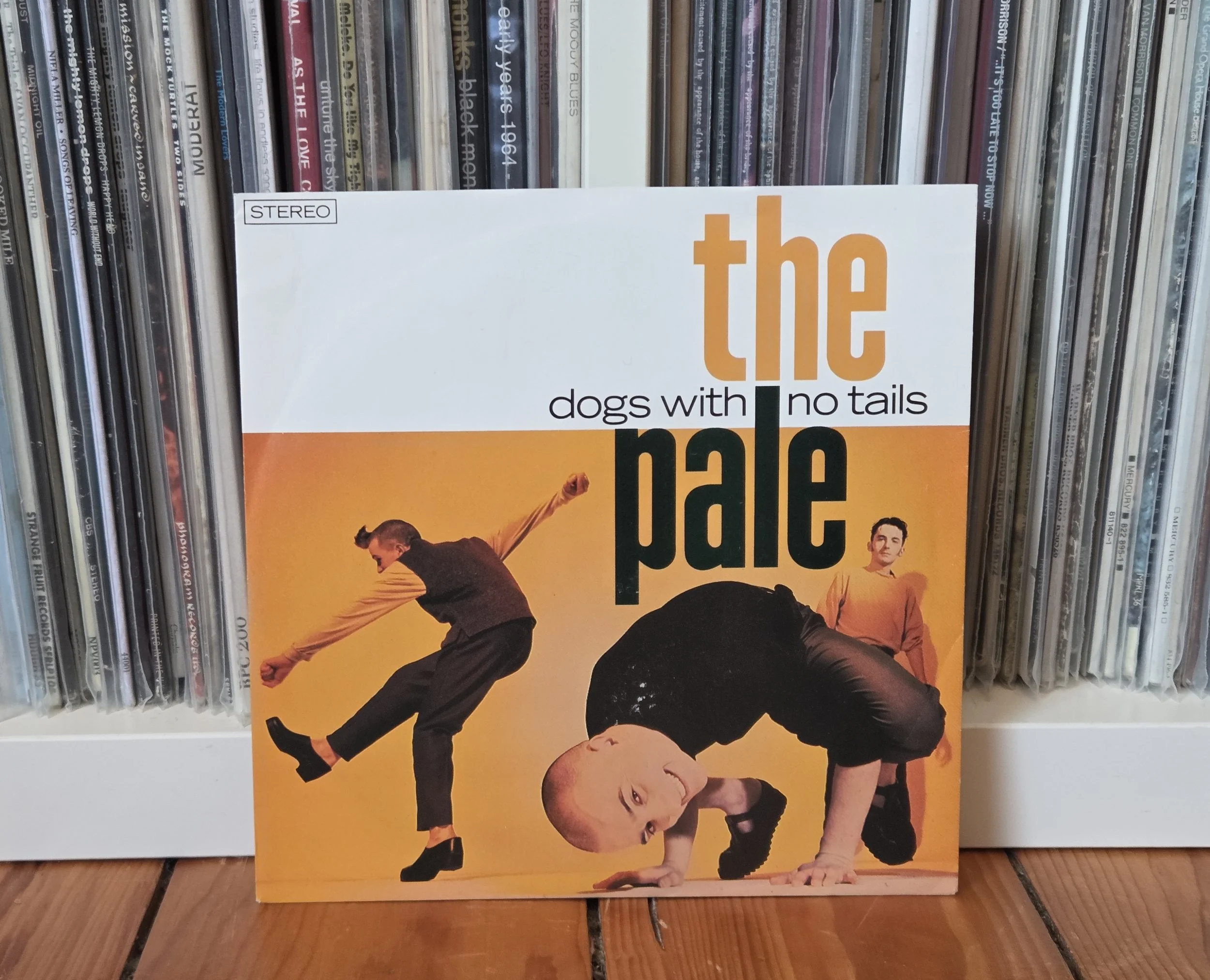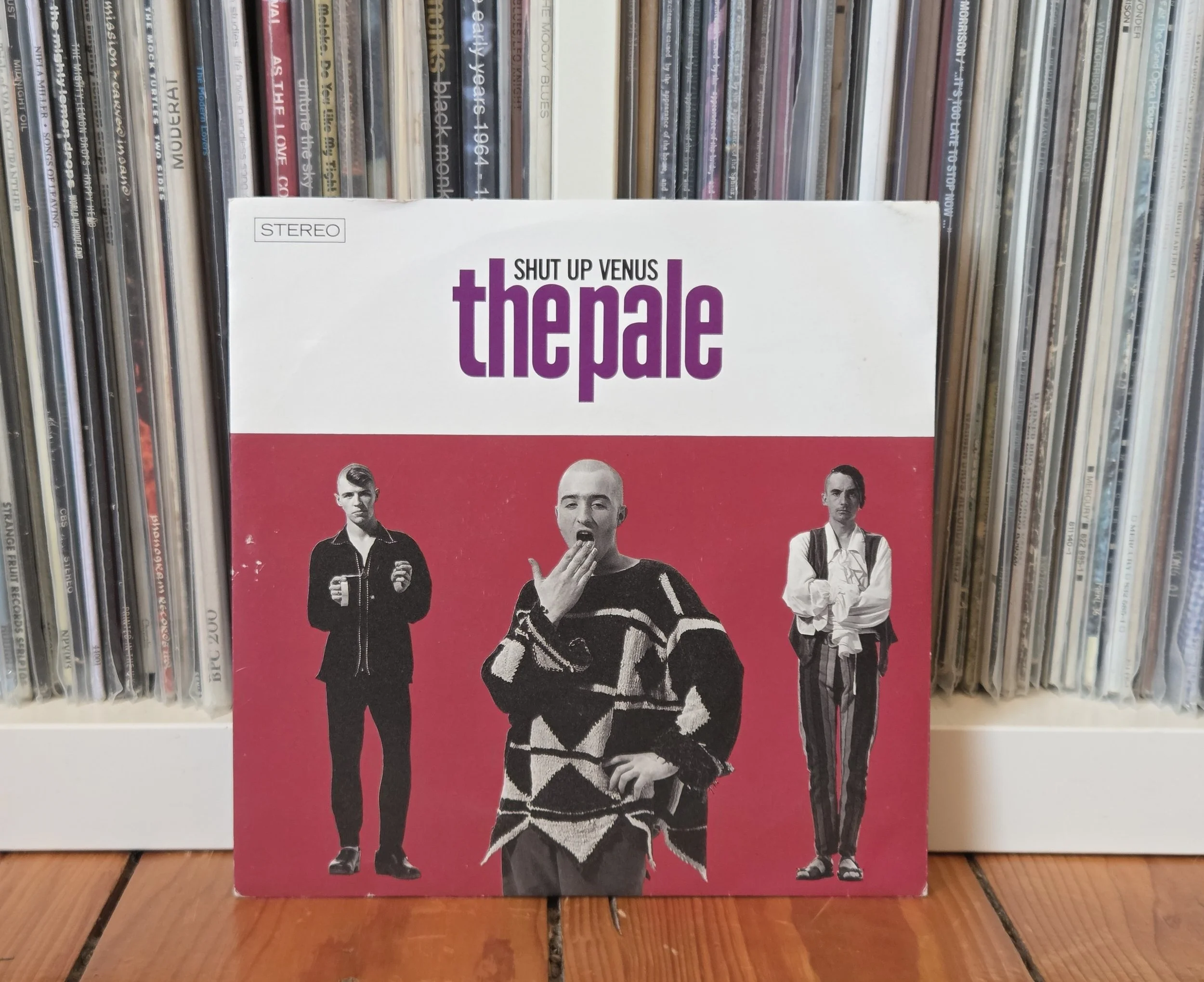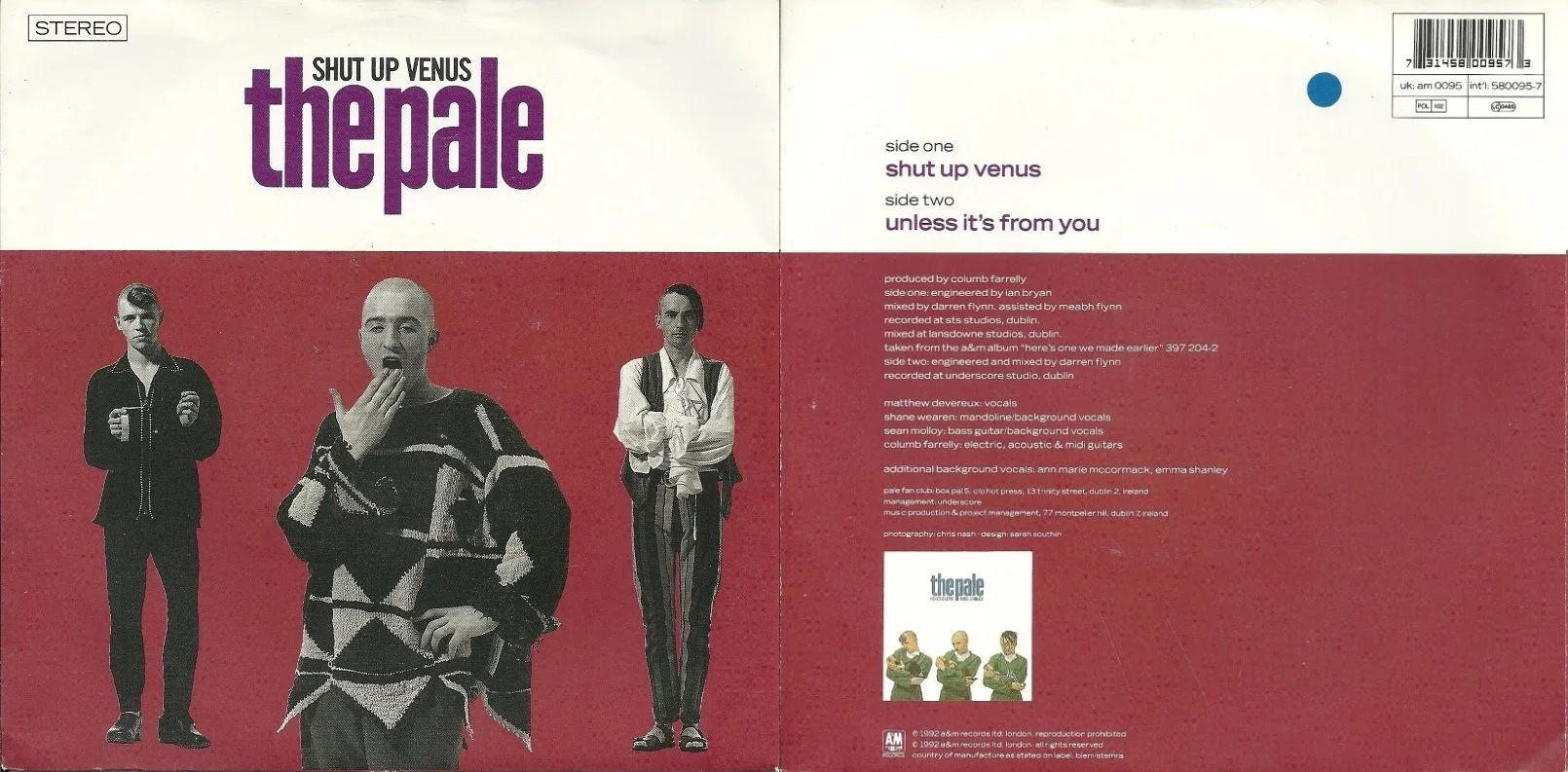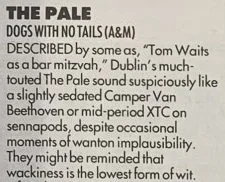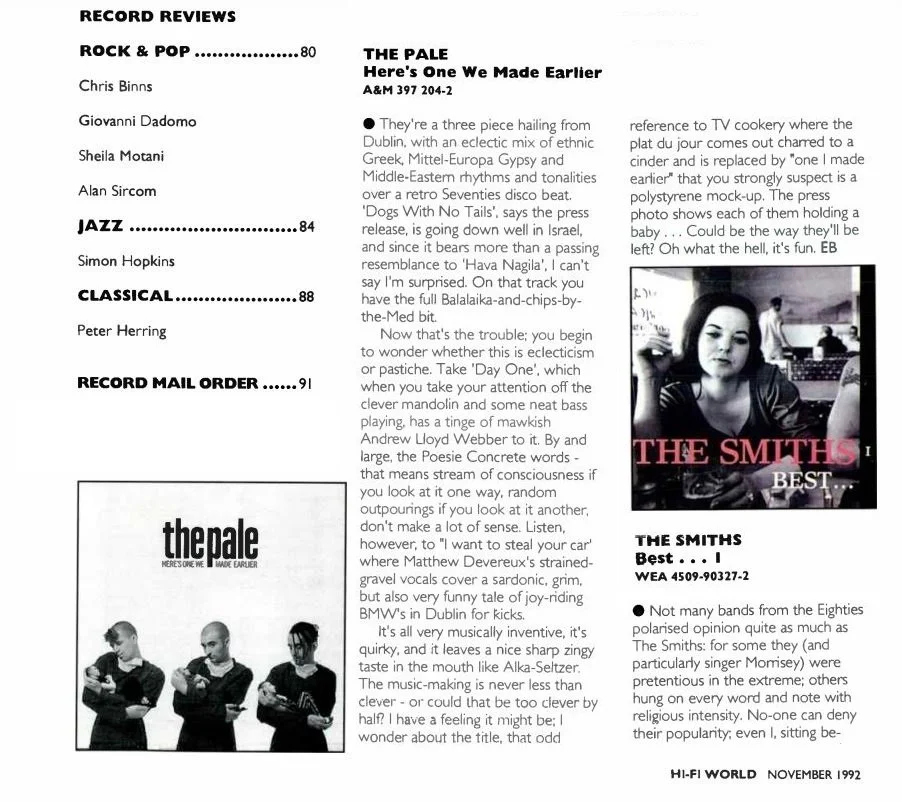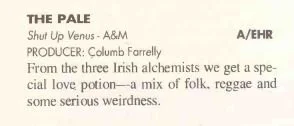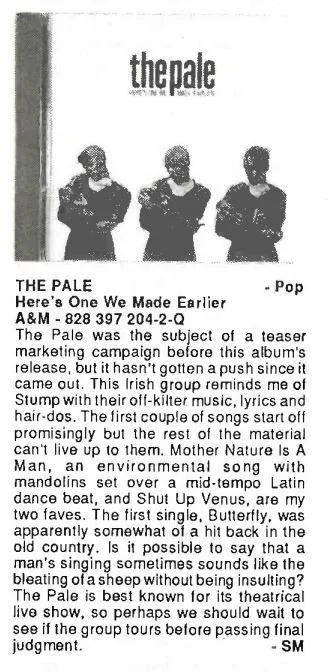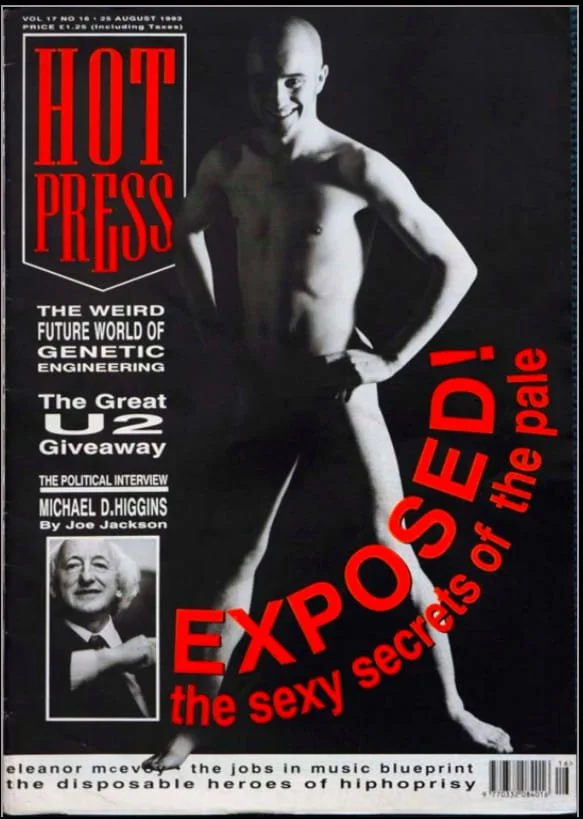Episode 56
Here’s One We Made Earlier
by The Pale
Shane Wearen and Matthew Devereux of The Pale busking on Grafton Street outside HMV on World Aids Day, 01 December, 1991. Sean Molloy is standing directly behind Shane and Ciaran Rock ( the band’s original guitarist) stands between Shane and Matthew. Photograph by John Carlos (taken from The Journal of Music).
On this episode I’m joined by Matthew Devereux for a deep dive into Here’s One We Made Earlier the debut album by The Pale.
We discuss the band’s early days, signing to A&M Records, recording their debut album in 1992, the album’s three singles, (‘Dogs With No Tails’, ‘Butterfly’ and ‘Shut Up Venus’), becoming a self-sufficient band post major label deals, absurdity in music, creating a character on stage, the band’s unique sound, fusing Irish and Eastern music, and a whole lot more. We also talk about Keep Sketch, the second album under Matthew’s own name, that he released earlier this year.
Here’s One We Made Earlier (A&M Records, 1992). Photograph by Paul McDermott.
In 1992 Irish Rock by music journalists Tony Clayton-Lea and Richie Taylor (who sadly passed away in 2014) was published. The 130-page book was subtitled “Where It’s Come From, Where’s It’s At, Where It’s Going” and at the time of publication, The Pale had just signed a record deal.
“One of Ireland’s curiosities, The Pale don’t fit the standard brief for Irish rock bands,” wrote Clayton-Lea and Taylor.
They continued: “Although both their image and music seem contrived (skinhead haircuts, distinct European rhythms), there’s something intuitive and natural about the band. The Pale are like nothing that has come out of Ireland before.”
In late 1992 Irish A-Z of Rock a 2CD compilation was released by Solid Records. Described on the sleevenotes as, “From an original idea by Tony Clayton-Ley and Richie Taylor authors of the book Irish Rock.” Although the sleevenotes spell Clayton-Lea’s surname incorrectly.
By the time of the compilation’s release The Pale had released their album, Here’s One We Made Earlier. ‘Dogs With No Tails’, the band’s debut single is features on CD2 nestled between The Golden Horde’s ‘100 Boys’ and Something Happens’ ‘Hello, Hello’. Iconic Irish singles all.
In their sleevenotes Clayton-Lea and Taylor wrote: “The bald(ish) Dublin trio signed to A&M Records late in 1991. Fronted by the enigmatic Matthew Devereux, The Pale fuse ceili with casbah and Tom Waits with the Brothers Grimm, to cook up their own glorious sound. Utilising mandolins, bass and drum machines, The Pale are certainly one of the most original bands that Ireland has ever produced.”
The Pale formed in Dublin in 1990. The band put out two releases independently, Why Go Bald? in 1990 and The Happy Ring House the following year, the titles of both referencing iconic neon advertising signs in Dublin city. Years later Matthew would explain that, “The Pale formed through a strong desire to stand apart and create a band who sounded unlike any other we ever heard. When we combined a cheap as chips drum machine with a mandolin and a bass guitar we found the first kernel of our sound.”
‘Dogs With No Tails’ (A&M Records, 1992). Photograph by Paul McDermott.
The band signed with A&M records and Here’s One We Made Earlier was released in late summer 1992.
“Tom Waits wanders mistakenly into a Ukrainian music hall where he has a few drinks, a whiff of helium and is then invited to sing a few songs with the house band,” wrote Nick Duerden in his Select magazine review of Here’s One We Made Earlier in September 1992.
He continued, “The Pale aren’t your average rock band. Dublin’s finest are three – vocals, bass and mandolin. They create wickedly insistent pop melodies that revolve around irreverent humour, a backdrop of Eastern European instrumentation and Matthew’s joyously serrated growl. Nothing here owes itself to convention, it’s all wonderfully inspired, full of twists, surprises, and batch of veritable quirk-pop classics.”
‘Butterfly’ (A&M Records, 1992). Photograph by Paul McDermott.
Three singles were released from the album: ‘Dogs With No Tails’, ‘Butterfly’, and ‘Shut Up Venus’. Songs that have stood the test of time and have seeped into the canon of Irish popular music.
‘Dogs With No Tails’ was released in June 1992. The single reached No. 23 in the Irish Singles Chart and No. 51 in the UK Singles Chart. ‘Butterfly’ was released in September 1992 and reached No. 16 in the Irish Singles Chart. ‘Shut Up Venus’ was released in November 1992 and failed to chart.
The Pale’s highest Irish Chart placing was in September 1993 when their self-released The Pale EP, with its lead track ‘Light Up My World’, reached No. 7 in the Irish Singles Chart.
‘Shut Up Venus’ (A&M Records, 1992). Photograph by Paul McDermott.
In 2021 Matthew told the Irish Independent: “I feel the path that leads from ‘Dogs with No Tails’ to now has been one of exploration. My evolution as a songwriter has taught me that the whole business is a fragile alchemy.”
That fragile alchemy is once more mined to beautiful effect on Keep Sketch, an album released under Matthew’s own name earlier this year. Keep Sketch, recounts stories of growing up on the Northside of Dublin in the 1980s, recorded utilising electronic instruments of the period.
Matthew Devereux - Keep Sketch (House Devil Records, 2025).
“What stands out is Devereux’s uncluttered music, which allows the songs to shine,” wrote the aforementioned Clayton-Lea in his Irish Times review of the album.
He continued, “There’s smart Krautrock here (‘Seven Grams’), touches of Being Boiled-era Human League there (the title track) and understated hints of Depeche Mode elsewhere (‘Government Milk’). The result is a toned-down album from a songwriter who merits more attention.”
That’s a sentiment I wholeheartedly agree with.
For Further Listening/Reading:
Paleanthology by The Pale is available on Bandcamp.
Keep Sketch by Matthew Devereux is available on Bandcamp.
Below: Press cuttings from various publications, click on each image to enlarge.
NME (11 April, 1992)
Evening Echo (27 May, 1992)
Melody Maker (30 May, 1992)
NME (6 June, 1992)
NME (6 June, 1992)
Irish Press (28 July, 1992)
The Pale (22 August, 1992)
Hot Press (27 August 1992)
Music & Media (29 August, 1992)
Select (September, 1992)
Irish Independent (17 September, 1992)
Hi-Fi World (November, 1992)
Music & Media (19 December, 1992)
RPM (26 December, 1992)
Hot Press (25 August, 1993)
Melody Maker (26 February, 1994)



